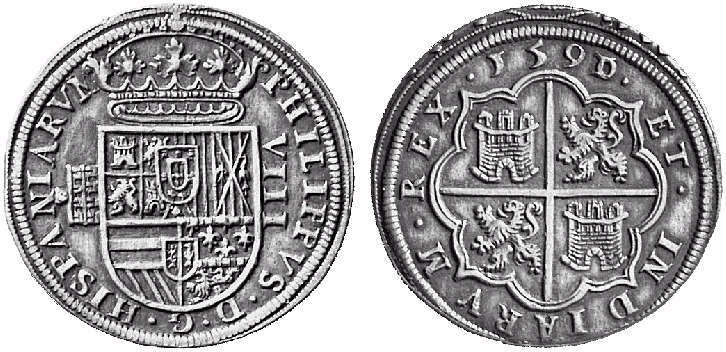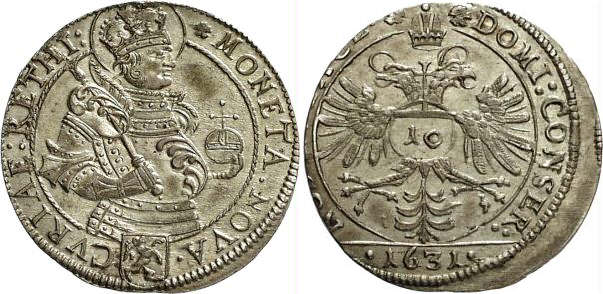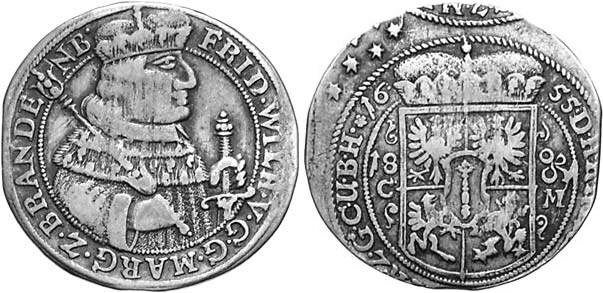Roller-press coinage : A long strip of metal was passed between two rollers on which the front and back image of the coin were engraved. The images followed each other closely on the rollers: there were 4 to 6 large images and up to 19 of the smaller ones. The metal strip was lengthened as the coins were minted so that a circular image became an oval one. Therefore, engravings had to be counter-ovaled in order to obtain circular coins. Once the coins were minted, they had to be punched out of the metal strip. The two sides of the coins came out centered only if the rollers were perfectly synchronized.
The following three off-centered coins were produced with inacurately coordinated rollers.
|

Spain, Philip II, 1556-1598. 8 Reales 1590, Segovia. Ø 40 mm 27,2 g
The reverse is shifted downwards so that the beginnig of the next coin appears at the top. The rollers were displaced radially and the axis of the coin pictures stood perpendicularly to the roller axis.

Switzerland, city of Chur. Zehner 1631. Ø 29 mm 3,3 g
|
The reverse is shifted laterally so that the edge of the next coin shows. The axes of the images were parallel to the axes of the rollers, in this case slightly shifted. The bottom of the coin coincides with an edge of the metal strip. The obverse and reverse of this coin are aligned in the same direction, ↑↑.
|

Brandenburg-Prussia, Frederic William, 1640-1688.
18 Gröscher 1655 CM, Königsberg. Ø 29 mm
The reverse is shifted downwards and to the left, and on its top we see part of the next coin. The rollers were shifted both radially and axially, and the axes of the images were perpendicular to the axes of the rollers.
Note the stars next to the image of the reverse. All rollers carried such additional engravings in order to compensate for the lack of engravings on the fringe of the strip. They allowed an even lengthening of the strip when passing between the rollers and also helped to avoid a displacement of the strip during mintage. These additional engravings appear on coins if the images were as decentralised as in this case.
On the sides, you see the straight edge of the strip. In this case, the strip had not been positioned properly between the rollers. The visible edge of the strip proves that the coin's obverse and reversw are aligned, ↑↑.
|
|